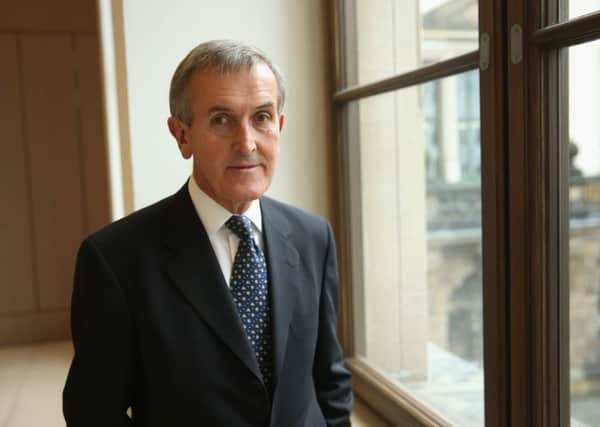Aye Write! reviews: Neil MacGregor | Robert Peston | David Donnison | Richard Holloway


It’s about a foot long, and has two legs and two arms, and until you get to the head it is very recognisably a human being. But the head is, equally recognisably, that of a lion.
That particular kind of cave-lion is now extinct, but in its day was the greatest threat to man. So why did one of our ancestors spend what we reckon must have been 400 hours carving that ivory lion-man? We don’t really know, but doesn’t it suggest that religion was born at the same time as art?
Advertisement
Hide AdRobert Peston’s disquisition on the state of the nation which preceded it was, by contrast, disappointingly banal, telling the audience things that they already knew – that Brexit will be bad news for the economy – and little that they didn’t. MacGregor, however, was in a more different, more entrancing league.
A master storyteller knows that what to leave out is as important as what to include. So in his Tannahill lecture based on his book Walking With Gods, MacGregor didn’t go into too much detail about the Lion-Man of Hohenstein-Stadel, about its discovery by geologist Otto Volzing on 29 August, 1939, and the completion of its reconstruction at the Museum of Ulm in 1982. Those facts are easily discovered but they’ll send you to sleep. Talk instead about the world’s first work of the imagination and the audience’s collective sense of wonder catches fire.
MacGregor’s talk spun out into a thesis, one that he made with quiet wit and unshowy panache. What matters about religion isn’t theology, he said, but the way it binds human beings together. Sometimes it can arise from the ground up, as in the story of the Virgin of Guadalupe – basically the 1531 Mexicanisation of the Virgin Mary – which is the reason the Mexico City basilica devoted to her is the most visited site in Christendom (no, I didn’t know either).
And if you want to know how all of this links in with the Vestal Virgins of Ancient Rome, the Paris memorial to Princess Diana, the symbol of the Church of Scotland and the most popular song at the start of the First World War – well, I understood his thesis, but it would take too long to explain. Here’s a clue – it’s to do with fire, burning bushes and keeping home fires burning, just as they probably were when the lion-man of Hohenstein-Stadel first made its appearance.
Fire fights the dark just as life fights death, and reflections on that fight formed the subject of two other Aye Write events on Saturday. In the first, David Donnison talked about his wife, the social reformer, peace activist and government adviser Kay Carmichael and the book of her writings – It Takes a Lifetime to Become Yourself – he put together after her suicide. He was holding her hand as she took the Nembutal she had provided herself with as post-polio syndrome tightened its grip.
“It came to me that she might be having an out-of-body experience, looking down from the ceiling. So I looked up and said, ‘Goodbye, my dear. I love you. Safe journey.’ Four minutes later she was dead.” Carmichael, whose work contributed to the creation of children’s panels and the special unit at Barlinnie, was jailed after breaking through the perimeter fence at Faslane. An autodidact who had a tough childhood in Glasgow’s East End, she never stopped learning and took a PhD in theology aged 76. One of her favourite theologians once wrote that he learnt so much from his dog, and the way it always lived in the moment, rather than as we so often do, in a fog of routine. That’s the way to live one’s last days too, she thought: to let go of regrets and prepare to meet death in the spirit of DH Lawrence’s poem The Ship of Death (“Have you built your ship of death? For you will need it”).
Advertisement
Hide AdRichard Holloway has been building his ship of death for at least the last four years and he talked about it on Saturday. His book about mortality is called Waiting for the Last Bus and is every bit as meditative, witty and elegiac as you would expect. There’s even a dog in it, Daisy, whom he surely also noticed living in the moment in the many hours they spent tramping the Pentlands together. As the book was going to press, he revealed, Daisy died, aged 17. “Given how old I am, she will not be replaced. Daisy was my last dog. And the years blow away like leaves in the wind.” Read it and weep.